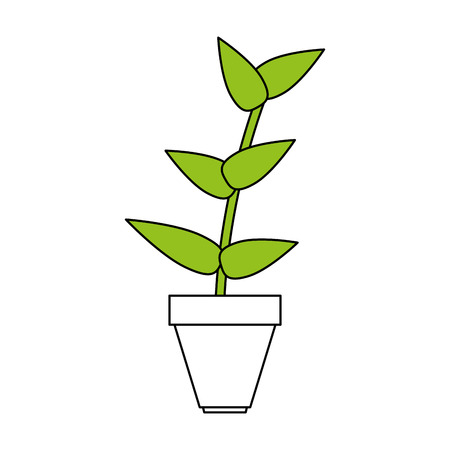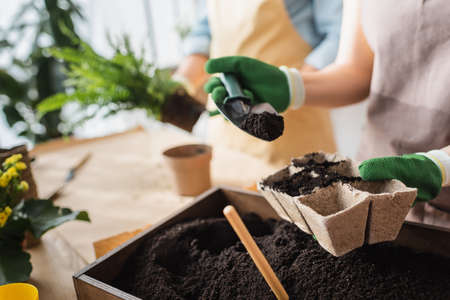1. Understanding IPM Principles for Houseplants
Keeping your indoor plants healthy and thriving is a top priority for many American households. One of the best ways to achieve this is by using Integrated Pest Management, or IPM. But what exactly is IPM, and why does it matter for your houseplants?
What is Integrated Pest Management (IPM)?
Integrated Pest Management is a smart, eco-friendly approach to controlling pests on your indoor plants. Instead of relying only on chemical sprays, IPM combines several methods to prevent and manage pest problems. The goal is to protect your plants while also being safe for your family, pets, and the environment.
Key Elements of IPM for Indoor Plants
| IPM Principle | What It Means | How It Applies Indoors |
|---|---|---|
| Prevention | Stop pests before they become a problem | Keep plants clean, inspect new plants before bringing them home, use good soil |
| Monitoring | Regularly check for pests and signs of trouble | Inspect leaves, stems, and soil weekly for bugs or damage |
| Identification | Know which pests you’re dealing with | Recognize common indoor pests like spider mites, fungus gnats, and mealybugs |
| Action Thresholds | Decide when action is needed based on pest levels | If you see a few bugs, try removing them by hand; bigger infestations may need more steps |
| Treatment Options | Use a mix of non-chemical and chemical controls as needed | Start with gentle methods like washing leaves or introducing beneficial insects before considering pesticides |
| Evaluation | Check if your actions worked and adjust as necessary | If pests return quickly, try a different approach or seek expert help |
Why Is IPM Important for American Homes?
Using IPM in your home helps create a healthier living space by minimizing pesticide use and keeping your indoor garden vibrant. With many families spending more time indoors, especially during colder months, safe pest control practices are more important than ever. Plus, IPM can save money over time by preventing major pest outbreaks before they start.
2. Common Indoor Plant Pests and Diseases
If you’re a houseplant enthusiast in the U.S., you’ve probably come across pests or diseases at some point. Knowing how to spot these common issues early can save your plants and keep your indoor jungle thriving. Here’s an overview of the most frequent problems and how to identify them before they get out of hand.
Common Indoor Plant Pests
| Pest | What to Look For | Early Signs |
|---|---|---|
| Spider Mites | Tiny, spider-like insects; fine webbing on leaves | Speckled or yellowing leaves, dusty appearance |
| Aphids | Small green, black, or white bugs clustering on new growth | Sticky residue (honeydew), curled leaves |
| Mealybugs | Cottony white masses on stems and leaf joints | Wilting, stunted growth, sticky leaves |
| Fungus Gnats | Tiny black flies hovering around soil surface | Slow plant growth, larvae in soil, wet or overwatered soil |
| Scale Insects | Brown or tan oval bumps on stems and undersides of leaves | Yellow spots, leaf drop, sticky residue |
Common Indoor Plant Diseases
| Disease | What to Look For | Early Signs |
|---|---|---|
| Powdery Mildew | White powdery coating on leaves and stems | Pale spots that spread quickly, distorted new growth |
| Root Rot (caused by fungi) | Mushy roots, foul smell from soil, wilting despite watering | Yellowing lower leaves, stunted growth, soggy soil conditions |
| Bacterial Leaf Spot | Water-soaked spots with yellow halos on leaves | Tiny translucent dots that turn brown or black over time |
| Botrytis (Gray Mold) | Gray fuzzy mold on leaves, flowers, or stems; dead patches on foliage | Damp or humid conditions; soft brown spots that expand rapidly |
| Mosaic Virus | Mottled yellow or light green patterns on leaves; distorted growth | Pale streaks or spots; slowed plant development |
How to Identify Problems Early On Your Houseplants
- Inspect Regularly: Check both sides of leaves and around stems weekly for any changes.
- Monitor New Growth: New shoots are often the first target for pests and diseases.
- Look for Sticky Residue: Many sap-sucking pests leave honeydew behind.
- Avoid Overwatering: Consistently wet soil encourages root rot and fungus gnats.
- Isolate New Plants: Keep new additions separate for a couple of weeks to prevent spreading issues.
- Use Good Lighting: Healthy plants under proper light are less likely to suffer from infestations or infections.
- Cultural Clues: Drooping, yellowing, or dropping leaves often indicate an underlying problem—don’t ignore these signs!
Your First Line of Defense: Observation!
The best way to prevent a minor pest or disease issue from becoming a major problem is by keeping a close eye on your plants. With regular checks and prompt action, you’ll be well-equipped to manage most common indoor plant threats using IPM principles.

3. Prevention and Cultural Controls
Best Everyday Practices for Healthy Indoor Plants
When it comes to indoor plant care, prevention is always better than cure. Integrated Pest Management (IPM) encourages everyday habits that keep pests at bay before they become a problem. Here’s how you can protect your houseplants using simple, practical steps:
Sanitation: Keep It Clean
Cleanliness is one of the most effective ways to prevent pest outbreaks indoors. Regularly remove dead leaves, fallen petals, and other debris from soil surfaces and plant containers. Wipe down plant leaves with a damp cloth to clear away dust and potential pests. Always sterilize pots and tools before reusing them for new plants.
Sanitation Checklist
| Task | How Often | Why It Matters |
|---|---|---|
| Remove dead foliage | Weekly | Prevents pest hiding spots |
| Sterilize pots/tools | Before reuse | Kills lingering pests/diseases |
| Wipe leaves with damp cloth | Monthly or as needed | Removes dust and insects like spider mites |
| Check drainage trays for standing water | Weekly | Avoids fungus gnat breeding grounds |
Plant Selection: Choose Wisely
Selecting the right plants can make a big difference in preventing pest issues. Some species are naturally more resistant to common indoor pests. Also, always inspect new plants for signs of insects or disease before bringing them home. Quarantine new arrivals for at least two weeks away from your other houseplants.
Pest-Resistant Houseplant Examples
- Snake Plant (Sansevieria): Tough, low-maintenance, rarely troubled by pests.
- Zee Zee Plant (Zamioculcas zamiifolia): Thick leaves deter most sap-sucking insects.
- Pothos (Epipremnum aureum): Vigorous growth and resilience against many common bugs.
- Cast Iron Plant (Aspidistra elatior): Withstands neglect and resists most infestations.
Environmental Adjustments: Set the Stage for Success
Pests thrive in environments where plants are stressed. Adjust indoor conditions to keep your plants healthy and less attractive to invaders. Maintain proper lighting according to each plant’s needs, avoid overwatering, and ensure good air circulation around your plants.
| Environmental Factor | What to Do | Pest Prevention Benefit |
|---|---|---|
| Lighting | Place plants in suitable natural or artificial light spots. | Healthy growth increases resistance to pests. |
| Watering Habits | Avoid soggy soil; let soil dry out between watering as appropriate for each species. | Deters root rot and fungus gnats. |
| Air Circulation | Avoid crowding plants; use fans if necessary. | Makes it harder for pests like spider mites to establish colonies. |
| Humidity Control | Aim for moderate humidity; use trays with pebbles or humidifiers if needed. | Makes environment less appealing for certain pests like spider mites. |
Your Daily IPM Routine in a Nutshell:
- Tidy up fallen leaves and debris promptly.
- Inspect plants regularly—catching problems early is key!
- Create ideal growing conditions based on each plant’s preference.
- Avoid bringing outdoor plants directly inside without quarantine.
This proactive approach helps ensure your indoor garden stays vibrant, healthy, and pest-free all year long.
4. Biological and Mechanical Control Options
Using Beneficial Insects Indoors
When it comes to indoor plants, introducing beneficial insects may sound a bit unusual, but it’s actually a smart way to keep pests in check without using harsh chemicals. There are several natural predators that can help manage common indoor pests like spider mites, aphids, and fungus gnats. Here’s a quick overview:
| Beneficial Insect | Target Pest(s) | How to Use Indoors |
|---|---|---|
| Lacewing Larvae | Aphids, mealybugs, whiteflies | Release near infested plants; they seek out pests to eat. |
| Ladybugs (Ladybird Beetles) | Aphids, scale insects | Let them loose on affected plants; they will feed on pests. |
| Predatory Mites | Spider mites, thrips | Sprinkle on soil or leaves where pests are active. |
| Nematodes | Fungus gnat larvae, root aphids | Mix with water and drench soil to target pests below the surface. |
Practical Tips for Using Beneficial Insects Indoors
- Buy from reputable suppliers: Look for garden centers or online retailers that specialize in live beneficial insects.
- Apply at the right time: Release insects when pest populations are just starting to grow for best results.
- Avoid pesticides: Chemical sprays can harm beneficial insects, so avoid using them at the same time.
- Monitor regularly: Check your plants often to see how well the natural predators are working and if more might be needed.
Hands-On Mechanical Techniques
If you’d rather not bring bugs indoors, there are plenty of hands-on ways to manage pests. These mechanical methods are safe and easy for most plant lovers:
- Hand-picking: Remove visible pests like caterpillars or mealybugs by hand and discard them.
- Water spray: Use a strong jet of water from a spray bottle to knock off aphids or spider mites from leaves.
- Pest traps: Sticky traps work great for flying pests like fungus gnats. Place yellow sticky cards near the base of affected plants.
- Physical barriers: Cover soil with decorative rocks or sand to discourage fungus gnats from laying eggs in moist soil.
- Cotton swabs dipped in alcohol: Dab directly onto mealybugs or scale insects for spot treatment without harming the plant.
The Best Approach: Combine Methods for Success
The most effective way to use biological and mechanical controls is to combine them. Start with simple hands-on techniques, and add beneficial insects if pest numbers remain high. By staying proactive and gentle with your indoor plants, you’ll encourage healthy growth while keeping unwanted bugs in check—no harsh chemicals needed!
5. Responsible Use of Chemical Controls Indoors
Sometimes, even the best prevention and non-chemical methods can’t completely eliminate pests on indoor plants. When you need to use chemical controls as part of your Integrated Pest Management (IPM) plan, it’s important to do so safely and responsibly. Protecting people, pets, and indoor air quality should always be your top priority. Here are some straightforward guidelines to help you make safe choices:
When to Consider Chemical Controls
Only consider using pesticides if other methods (like manual removal, pruning, or natural predators) haven’t worked. It’s best to start with the least toxic option that will do the job.
Choosing the Right Product
| Pesticide Type | Best For | Considerations |
|---|---|---|
| Insecticidal Soap | Aphids, spider mites, mealybugs | Low toxicity; safe for most indoor use; may require repeat applications |
| Horticultural Oil | Scale insects, whiteflies, spider mites | Suffocates pests; avoid when plants are stressed or in direct sunlight |
| Neem Oil | General soft-bodied pests and some fungi | Naturally derived; can have a strong smell; may harm sensitive plants |
| Bacillus thuringiensis (Bt) | Caterpillars and larvae | Bacteria-based; targets specific pests; safe for pets and people when used as directed |
| Synthetic Pesticides* | Severe infestations only | Use with caution; follow label directions strictly; ventilate well during/after application |
*Synthetic pesticides are not usually recommended for regular indoor plant care but may be necessary in rare cases.
Safe Application Tips
- Read the label: Always follow directions on the product label—this is required by law in the U.S.
- Ventilate: Open windows or run fans while applying and afterwards to keep air fresh.
- Remove people and pets: Keep kids and animals out of the room until sprays have dried or dusts have settled.
- Avoid overuse: Only treat affected plants and never use more than recommended.
- Spot test: Try any spray on a single leaf first to check for plant sensitivity.
- Avoid edible plants indoors: Some chemicals aren’t approved for use on herbs or veggies grown inside—check labels carefully.
- No outdoor products indoors: Never use pesticides labeled “for outdoor use only” inside your home.
- Store safely: Keep all chemicals locked away from children and pets.
Protecting Indoor Air Quality
- Avoid aerosols: Choose ready-to-use sprays with pump bottles instead of pressurized cans when possible.
- Select low-odor options: Many products now offer low-VOC or odorless formulas that are better for enclosed spaces.
- Treat small areas at a time: This limits chemical exposure in your living space.
- Clean up spills immediately: Use disposable towels and throw them away outside your home.
If You Need Extra Help
If you’re unsure about which product to use or how to apply it safely, reach out to your local Cooperative Extension office or a certified pest management professional familiar with IPM principles. They can give advice tailored to your specific situation and area.


